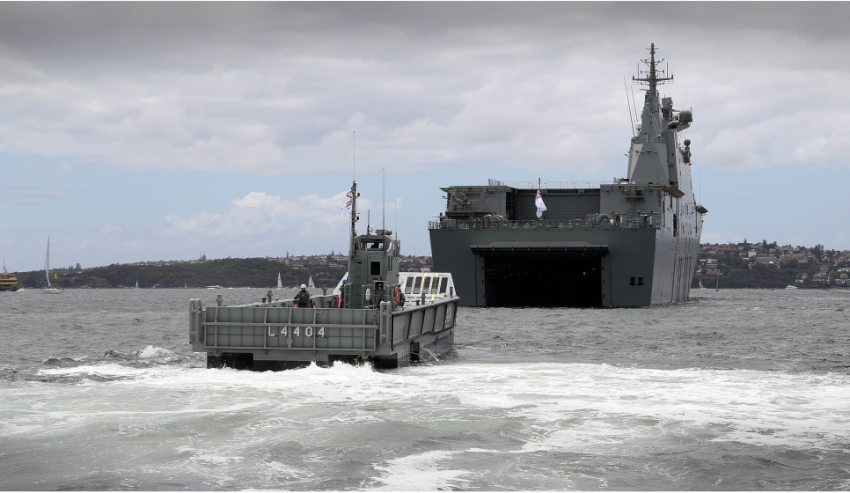Chief of Navy Vice Admiral Tim Barrett, AO, CSC has told Senate estimates Defence is currently investigating the possibility of changes to the Navantia-built amphibious landing craft mechanised (LCM) for the Canberra Class Landing Helicopter Docks.
To continue reading the rest of this article, please log in.
Create free account to get unlimited news articles and more!
Under questioning from South Australian senator Alex Gallacher, VADM Barrett said HMA Ships Adelaide and Canberra LLC, which were purchased from Spanish shipbuilder Navantia, may undergo engineering alterations.
"We are investigating changes to the LLC at the moment," he told the hearing.
The landing craft have been in the spotlight since August this year when it was revealed trials were suspended after the vessels sank too low in the water with the 62-tonne non-swimmable M1 Abrams tank on board.
In August, Defence said that while the LLC can carry 65 tonnes in benign weather conditions, decreasing to 38.9 tonnes in sea state 4, further test and evaluation activities may change these figures.
Defence is now relying on Mexeflotes that were acquired with HMAS Choules, which recently had its life extended, that Australia purchased from the UK Navy in 2011.
"The intent of extending Choules was to allow us to fulfil fully the amphibious capability that we have sought from procurement of the LHD," Barrett told the senate estimates hearing.
"The Mexeflote has a higher rating. You can carry up to 120 tonnes. The issue is that you can, using that, move tanks ashore in a slightly higher sea state. What we have attempted to prove is that, while we are introducing the LLC into service, and acknowledging there may be changes that need to be made from the engineering perspective, there are other ways in which we can conduct the operation and we would use the Mexeflote."
In response to Gallacher asking whether Australia can land a tank in rough seas, VADM Barrett responded: "With the Mexeflote, at a higher sea state than the LLC."
Problems with the LLC in August came after the LHD's propulsion pods were plagued with issues earlier this year.
LHDs Canberra and Adelaide were dry docked in Sydney from March this year until the end of June following issues in their propulsion pod systems.
As previously reported on Defence Connect, VADM Barrett confirmed the migration of oils across seals in the LHDs' azimuth propulsion pod systems and added investigations were continuing to confirm whether this was a design problem or related to damage from excessive use.
Defence has since confirmed the docking and inspection of Adelaide identified wear in some bearings in the port pod, which is assessed to be the likely cause of the oil contamination.
At Senate estimates in May, the Chief of Navy also delved into the issues with the aircraft used on the LHDs, along with the aircraft's capabilities and limits.
"There have been a number of incidents with aircraft MRH in our ships at sea, the aircraft itself does not have a rotor brake, which means the blades slow by themselves when the engine's engaged and during that period there is always a chance that wind will affect the disc as the rotor slows," said VADM Barrett.
"We have had incidents ... where those blades have exceeded what we would normally consider to be relevant engineering limits."
While both ships are expected to return to service before the end of 2017 following periods of defect rectification, maintenance and trials, only one was able to participate in the biennial Australia-US military exercise, Talisman Sabre, off the coast of Queensland in July.

 Login
Login







